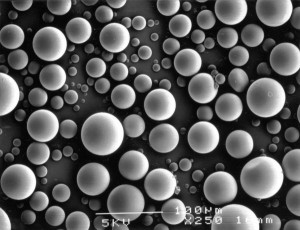
HIV infection is a devastating diagnosis that can drastically change the lives of those affected. The CDC estimates1 that over 1.1 million people in the U.S. are currently infected with HIV, and there are approximately 50,000 new cases each year.
Antiretroviral therapy (ART) has helped those infected with HIV to live longer, healthier lives, but long-term treatment often results in the development of certain metabolic disorders, such as dyslipidemia and insulin resistance. Dyslipidemia is characterized by an abnormal amount of fat or cholesterol in the blood, and insulin resistance is an inability of body cells to use insulin effectively.
Metabolic disorders can have wide-ranging effects on the brain, bones, cardiovascular system, liver, and kidneys. ART eventually causes these disorders through a number of metabolic pathways, and problems are occurring more frequently as the population ages.
A recent study published in BioMed Central Infectious Diseases2 looked into the specific mechanisms at work during metabolic disruption caused by ART. Researchers examined the blood plasma of 32 HIV infected individuals undergoing protease-inhibitor (PI) ART compared to 20 healthy controls using gas or liquid chromatography and mass spectrometry. Their research was untargeted, as researchers were looking for any differences they were able to discover.
The researchers found a significant difference in the metabolic profiles of the PI-ART HIV patients compared to the healthy controls. A number of altered lipid metabolites were present, including:
- Interferon and interleukin: biomarkers of inflammation.
- Lipopolysaccharide and LPS-binding protein: biomarkers of microbial translocation (microbes that are circulating throughout the body).
- Bilirubin: a biomarker of hepatic (liver) function.
- Eicosanoids, polyunsaturated fatty acids, bile acids, and sulfated steroids: altered ligands of nuclear receptors that regulate inflammatory and metabolic pathways.
LPS-binding protein, YKL-40, and soluble CD14 were measured in plasma samples via ELISA (enzyme-linked immunosorbent assay). Interleukin, IL-2 receptor alpha, and interferon were quantified in plasma samples with a Luminex multiplex assay. Multiplex assay technologies provide researchers with a way to simultaneously test for many substances at once, saving a great deal of time and money.
This research points the way towards new and effective treatments for the health problems caused by long-term PI-ART. Now that the biomarkers discovered in this study have been associated with this HIV treatment, they can be used by future researchers to more effectively examine metabolic abnormalities through blood plasma monitoring. With further study of the mechanisms involved in metabolic dysregulation, treatments can be developed to counteract and prevent the hepatic, inflammatory, and microbial translocation disorders before they begin.
Learn more about Luminex multiplexing instruments.
Interested in developing your own assays? The free xMAP® Cookbook contains detailed methods and protocols to help you develop assays on the xMAP platform.
References:
- HIV in the United States: At a glance. CDC (Internet). Cited Sep 2013. Available from: http://www.cdc.gov/hiv/statistics/basics/ataglance.html
- Cassol1 E, Misra V, Holman A, Kamat A, Morgello S, Gabuzda D. Plasma metabolomics identifies lipid abnormalities linked to markers of inflammation, microbial translocation, and hepatic function in HIV patients receiving protease inhibitors. BMC Infectious Diseases 2013:13;203. Available from: http://www.biomedcentral.com/1471-2334/13/203.